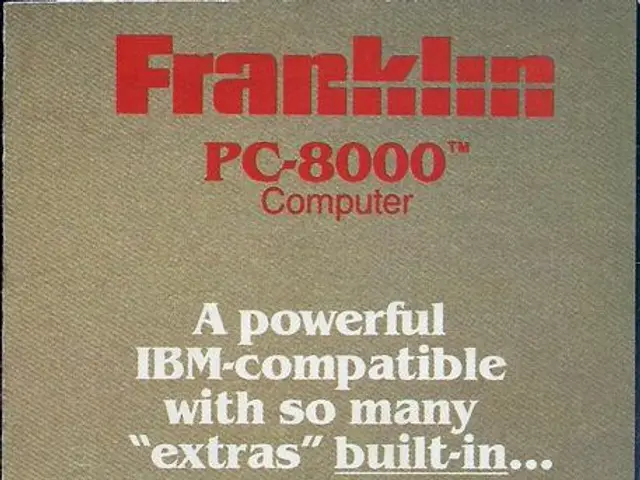Construction Industry Innovations and Upgrades
Electrifying Homes: A Step Towards Healthier Indoor Environments and Climate Resilience
The use of gas in homes, powering ovens, heating living spaces, and warming water, has been a common practice for many years. However, recent studies and research have highlighted concerns about the impact of gas stoves on indoor air quality and public health.
According to the Rocky Mountain Institute, homes with gas stoves may have nitrogen dioxide concentrations more than four times the Environmental Protection Agency's allowable limit [1]. This harmful gas, linked to asthma and respiratory issues, can lead to a range of health problems, particularly affecting children [3].
Gas stoves emit a variety of pollutants, including particulate matter, nitrogen dioxide, carbon monoxide, formaldehyde, and benzene, a known carcinogen [1][3][5]. Exposure to these pollutants can result in a higher risk of developing asthma, respiratory problems, and other health issues.
As the world grapples with the climate emergency, transitioning to electric devices and heat pumps offers a solution that addresses both the climate crisis and public health concerns. Electrification improves energy efficiency, lowers household energy costs, and reduces greenhouse gas emissions [2].
By eliminating indoor air pollutants from gas combustion, electrification can help reduce the exacerbation of respiratory diseases. It also lowers long-lasting air pollution inside homes, protecting vulnerable populations like children [1][4].
Efforts such as neighborhood-scale decarbonization, which targets gas infrastructure in communities with high pollution and asthma rates, can amplify these benefits by addressing outdoor and indoor pollution simultaneously [2].
President Biden has set a goal to achieve pollution-free power by 2035 [6]. This ambitious target aligns with the benefits of electrification, which can contribute significantly to healthier indoor environments and climate resilience [1][2][3][4].
The focus on removing gas infrastructure has been primarily on new construction, but existing gas lines and appliances will also need to be addressed [7]. The electric future is expected to be cleaner and safer, with less indoor air pollution and a reduction in outdoor pollution from gas and oil.
However, the transition away from gas is not without challenges. Cities across California and beyond have passed bans on new gas lines for buildings, but the gas industry has pushed back with affordability talking points while excluding health costs [8].
Policy should incentivize electric alternatives to encourage homeowners and landowners to replace gas appliances with electric ones. The Greenlining Institute has suggested steps to center equity as cities electrify their buildings, including asking community leaders and members what they need [9].
The Greenlining Institute's director of energy equity, Carmelita Miller, emphasizes the importance of addressing local concerns while paving a path toward electrification [9]. Panama Bartholomy, the director of the Building Decarbonization Coalition, expects that much of the existing gas lines will be left in the ground due to cost-effectiveness [10].
Private air quality monitoring companies like Clarity are deploying technology to measure pollution in cities around the world, from Guangzhou, China, to Accra, Ghana [11].
As the world moves towards a more electrified future, it's crucial to remember that this transition will have significant benefits for communities of color, particularly Black people, who are expected to benefit from reduced health risks associated with the transition away from gas [12].
In conclusion, electrifying homes and appliances offers a holistic approach to addressing the climate emergency, protecting public health, and improving indoor air quality. This transition, supported by evidence and public health expertise, can lead to healthier indoor environments, lower healthcare costs, and a more climate-resilient future.
References:
[1] Rocky Mountain Institute. (2021). Healthy Buildings: The Case for Electrification. https://www.rmi.org/insight/healthy-buildings-the-case-for-electrification/
[2] Rocky Mountain Institute. (2022). Electrifying Buildings: A Guide for Policymakers. https://www.rmi.org/insight/electrifying-buildings-a-guide-for-policymakers/
[3] Natural Resources Defense Council. (2019). Gas Stoves Pose a Hidden Danger to Public Health. https://www.nrdc.org/experts/james-brook/gas-stoves-pose-hidden-danger-public-health
[4] American Lung Association. (2021). Indoor Air Quality. https://www.lung.org/our-initiatives/healthy-air/indoor-air-quality/
[5] Environmental Defense Fund. (2019). Gas Stoves Pose a Hidden Danger to Public Health. https://www.edf.org/health/gas-stoves-pose-hidden-danger-public-health
[6] White House. (2021). President Biden Announces Aggressive New Goal to Cut U.S. Greenhouse Gas Emissions in Half by 2030. https://www.whitehouse.gov/briefing-room/statements-releases/2021/04/22/fact-sheet-president-biden-announces-aggressive-new-goal-to-cut-us-greenhouse-gas-emissions-in-half-by-2030/
[7] Rocky Mountain Institute. (2022). Electrifying Buildings: A Guide for Policymakers. https://www.rmi.org/insight/electrifying-buildings-a-guide-for-policymakers/
[8] Natural Resources Defense Council. (2021). Cities Are Banning Gas Hookups in New Buildings. The Gas Industry Is Fighting Back. https://www.nrdc.org/experts/james-brook/cities-are-banning-gas-hookups-new-buildings-gas-industry-fighting-back
[9] Greenlining Institute. (2021). Equitable Electrification: A Roadmap for California. https://greenlining.org/equitable-electrification-roadmap-for-california/
[10] Rocky Mountain Institute. (2022). Electrifying Buildings: A Guide for Policymakers. https://www.rmi.org/insight/electrifying-buildings-a-guide-for-policymakers/
[11] Clarity. (2022). Our Mission. https://www.clarity.co/
[12] Greenlining Institute. (2021). Equitable Electrification: A Roadmap for California. https://greenlining.org/equitable-electrification-roadmap-for-california/
- The magazine, 'Electrifying Homes: A Step Towards Healthier Indoor Environments and Climate Resilience', highlights the benefits of transitioning from gas to electric devices and heat pumps.
- The newsletter, 'Healthy Buildings: The Case for Electrification' from the Rocky Mountain Institute, provides evidence supporting the improvement of indoor air quality through electrification.
- At the community level, efforts like neighborhood-scale decarbonization focus on reducing indoor and outdoor pollution by targeting gas infrastructure in areas with high pollution and asthma rates.
- In the realm of art and design, emphasis should be placed on creating energy-efficient homes that prioritize health-and-wellness, climate-change, and environmental-science considerations.
- As technology advances, private companies like Clarity deploy technology to measure pollution levels in cities across the globe, contributing to a more informed approach in transitioning towards a cleaner future.
- Local policy-makers can incentivize the shift towards electric appliances by considering the environmental and health benefits, while also centering equity within their strategies, as suggested by the Greenlining Institute.




